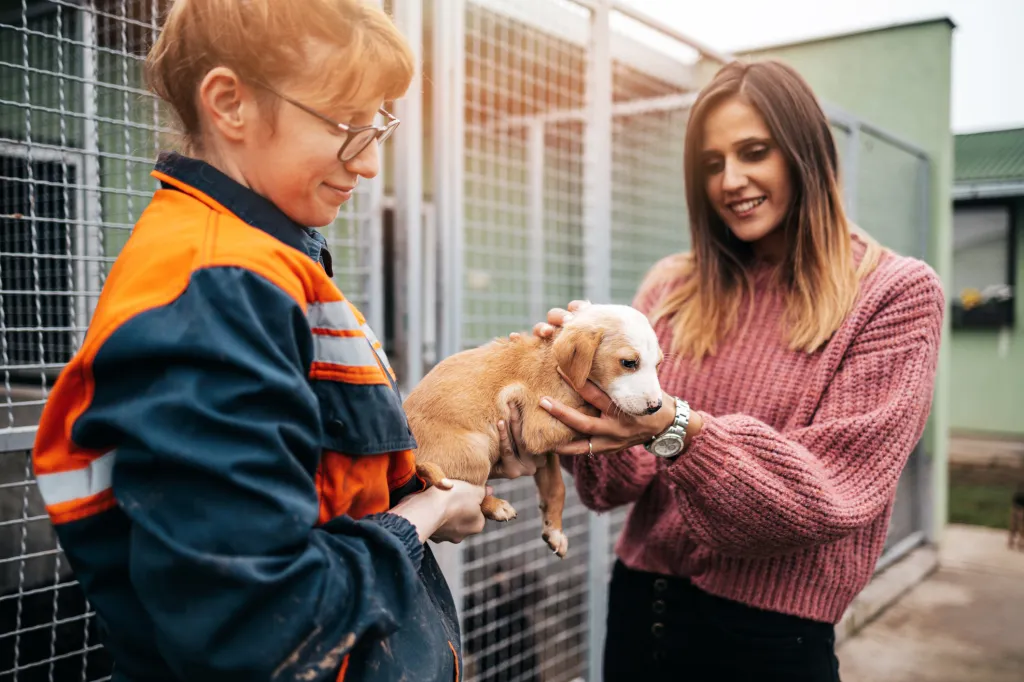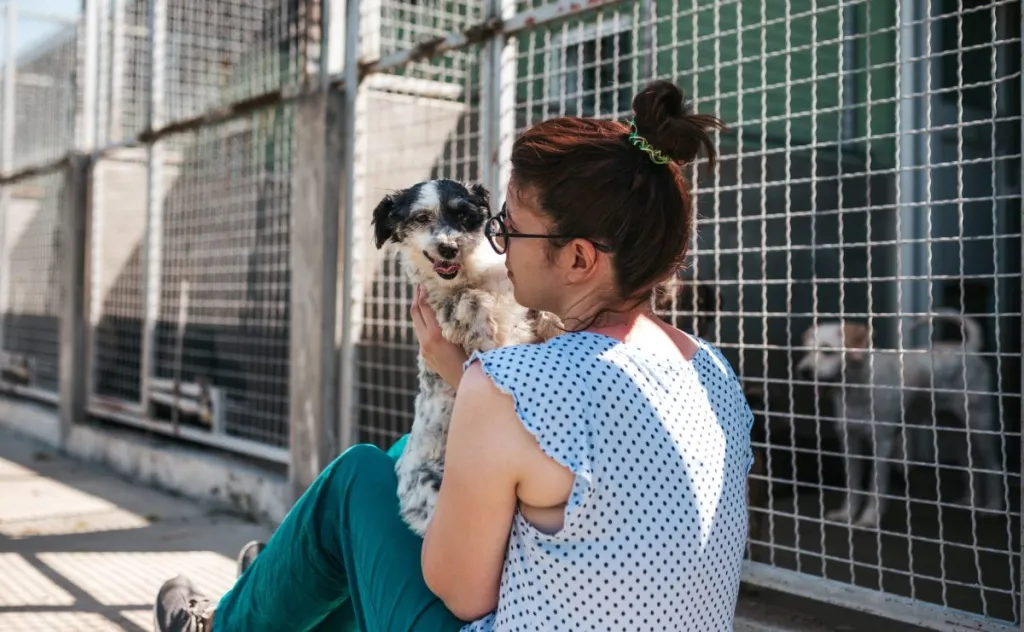Saving a dog from a shelter is one of the most soul-satisfying things a dog lover can do. That notwithstanding, choosing the right pup can be tough. Shelters can be stressful places to visit, with lots of dogs jammed into small, harshly lit, noisy spaces. The surroundings may make dogs depressed, anxious, or even manic, so it’s often hard to know what their personalities are really like. Still, it’s possible and so rewarding to find your new best friend in one of those facilities. Here’s a list of questions to ask shelter workers — and yourself — to help you choose the right dog.
What to ask before meeting a shelter dog
When you get to the shelter, there are a few questions you should ask the people who work there before your first in-person meeting with a dog you’re considering.
Keep in mind that you won’t always get good answers. Shelters that focus more on animal control than adoption may know very little about the dogs. And an employee who hopes to save a dog who’s tugging on their heartstrings may not give you the full story.
Still, these are questions worth asking:
- Why is the dog here? A stray is an unknown, but if a dog was given up, you’ll want to know why. It may have nothing to do with the dog — a move, a divorce, an allergy — or it may be a behavior problem. Behavior problems are often treatable, but it’s good to know about them upfront.
- Does the dog have any known medical issues? It’s better to know in advance if you’ll be facing large vet bills.
- What’s the best thing about this dog? What’s the worst thing about this dog? You’ll learn more than if you simply ask if a dog is nice or well-behaved.
- Has the dog been temperament tested? Temperament tests try to gauge a dog’s personality and catch red flags such as object guarding and aggression. But take the results with a grain of salt; they’re more a snapshot of a dog’s behavior at the moment of the test than a lifetime guarantee.
Questions to ask when you meet the dog in person

Even if the shelter doesn’t have much information to offer, try to spend as much time as possible with any dog you’re interested in.
1. Stand a few feet away and watch how the dog reacts to people
- Is the dog sitting quietly and watching the world? Chances are you’ve found a calm dog.
- Do they fail to react much, even when people approach? This could signal a dog who isn’t people-friendly and may be aggressive. However, it could also mean they aren’t feeling well. So if the dog seems too quiet, ask if they’re sick or recovering from surgery.
- Are they pacing and whining? Shelters are stressful places for dogs, and this dog is worried. They may take a while to relax if you bring them home.
- Are they jumping and barking? They’re probably just excited to see people — a good sign — but you’ll need to do some training to teach them to chill out.
- Do they lunge at the door, bark their head off, spin, and chase people’s feet as they walk by? They may be aggressive, but they may also simply be feeling the stress of shelter life. If they calm down quickly after people pass, stress is the likely culprit.
- Do they hang at the back of the kennel? Worst case, the dog is scared of people. Fearful dogs take a lot of training and can bite or snap when they feel threatened. However, the dog could also be sick or depressed. Ask some questions of the shelter staff: Did the dog’s former human die? Have they been in the shelter a long time? If so, they may just be sad, and not unfriendly.
2. Walk up to the door of the kennel
- Does the dog freeze in place, growl, move away from you, or does the hair on their back stand up? If so, these are all warning signs of an unfriendly dog. The dog will need experienced training that most pet parents aren’t prepared to handle. It may be best to choose a different dog.
- Do they lick your hand, jump up, dance around, bow down with their rump in the air, or show a relaxed, open mouth with a lolling tongue? Great! These are all friendly, playful gestures.
3. Take the dog to a quiet room or yard
- Can you get the dog to pay attention to you? Just like us, dogs prefer some people over others. Shelters are distracting places, but if you can get their attention after a few minutes, that’s a good sign that the two of you click.
- Is the dog comfortable with a gentle pat? If they accept it happily, it’s a good sign. If they move away, freeze, or growl, they either don’t enjoy being touched or aren’t fond of people. Either way, it’s best to look elsewhere if you’re not ready for serious training that may or may not work out in the end; you want a dog who’s safe to cuddle.
- Is the dog interested in toys or balls? This is only a concern if you have fantasies of playing fetch with your new pooch. Many dogs can be taught to retrieve and play fetch, but some just aren’t interested.
4. Take the dog for a short walk
- Does the dog pull or jump up? Don’t worry too much about these behaviors; you can leash-train a dog. Just make sure that you can at least hang on and control them.
- Do they bark excessively, growl, or lunge at other people, dogs, or cars? They probably haven’t had enough exposure to the world. Once they’re out of the shelter, they may react aggressively to unfamiliar people or situations. Unless you’re up for a lot of training and socialization, keep looking.
- Does the dog cower, hide, freeze, or refuse to move? Then they’re extremely shy and fearful. You can work with timid dogs, but they need lots of training. And, there’s a risk that a timid dog may bite or snap when frightened.
5. Finally, do a gut check
- Does the dog seem comfortable with you, and are you comfortable with the dog? Do they give you a warm, fuzzy feeling, or a funny feeling? You’ll be spending many years with your new dog, so it’s worth listening to your instincts as well as doing your research.









